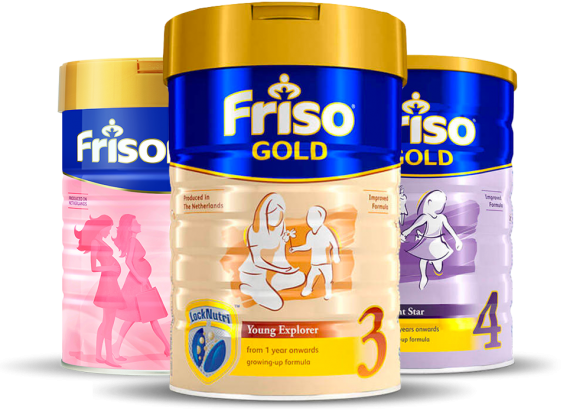Mummies, are you worried about the first time your little one switches over to solids? We wouldn’t blame you. It can be quite a challenging experience for some mums.
When your little one starts to wean, the first thing you should take note of is how to preserve nutrients while cooking.
We all know that different nutrients are found in different types of baby food for weaning. Why is it important for us to know how to preserve nutrients while cooking?
When nutrients are preserved in food, and your little one consumes it, they will be getting the right vitamins and minerals they need for their healthy growth!
We’ve come up with a guide to help you ensure that your child gets essential nutrients from their food with a few cooking and milk preparation tips.
1. Observe the time, mind the temperature
There are two main factors that you have to be aware of while cooking food for your little ones: time and temperature. The longer you cook and the higher the temperature that you subject the food to, the higher the chances of ingredients losing their nutrients.
There are heat-sensitive nutrients like water-soluble vitamins (folic acid, vitamins B and C) commonly found in vegetables. You should take extra care to prepare such foods.
To reduce the loss of fat-soluble vitamins like A and E, use very little oil when cooking. There is no point in buying organic, free range food if all the nutrients are being lost in the preparation process.
2. Choose your cooking method carefully
 When you use cooking methods like boiling in water and deep frying in hot oil for instance, nutrients will be lost. It is best to use cooking methods that minimise the time, temperature, and amount of water needed to retain key nutrients. This includes methods like baking or boiling instead of frying.
When you use cooking methods like boiling in water and deep frying in hot oil for instance, nutrients will be lost. It is best to use cooking methods that minimise the time, temperature, and amount of water needed to retain key nutrients. This includes methods like baking or boiling instead of frying.
Here are a few steps on how to preserve nutrients while cooking baby food for weaning:
1. Boiling
Boiling is a quick and easy way of preparing food. However, you need to be careful about the type of food that you choose to boil. Boiling is great for preserving nutrients in carrots, zucchinis and broccoli but not so much for dark leafy green vegetables1.
2.Steaming
Steaming vegetables and fish is a great way to preserve its nutrients because you’re allowing it to cook in its own juices. It is also a great way to cook broccoli to maximise its taste and colour.
3. Broiling
Broiling is cooking food under high, direct heat for a short time. This is a great way to prepare tender cuts of meats but not for veggies.
4. Microwaving
Interestingly enough, this has been suggested by researchers that it could be one of the healthiest ways to prepare food2. Because of its really short cooking time, minimal nutrients are lost in the preparation process. It can also be applied to pretty much anything – rice, eggs, meat or veggies.
5. The Ice Method
If you’ve noticed, on cookery shows on television, chefs always have a bowl of ice next to them while they are cooking. They use it to stop the cooking process once the food is out of the boiling water. This method helps to retain the texture and colour of vegetables as well as prevents it from losing nutrients.
3. Avoid consuming canned food

There is one more important thing to keep in mind when you prepare food for your child: Always use fresh fruits and vegetables and not those out of a can3!
Canned food may reduce some of the nutrients by half4!
When you practice this, the nutrients retained in your child’s food gets easily digested by your little ones!
Like the way we take great care in preparing our children’s food, the same level of care must be applied to their milk preparation. Leading formula milk brand Friso takes this aspect of preserving nutrients in milk seriously.
Did you know milk nutrients can be preserved during milk preparation?

Did you know that Friso Locknutri preserves the milk nutrients during milk processing, which makes digestion so easy for your child!
Preparing milk requires the same care as preparing food in ensuring your child gets the best they need out of a feed. When you prepare milk the right way, you are retaining the nutrients that your child needs.
The rule of thumb is to not exceed 40 degrees Celsius of heat to prepare milk. Anything more than this will destroy key nutrients in milk.
Retain all these important nutrients by always ensuring that the temperature used to heat up milk never surpasses 40 degrees Celsius! When the nutrients are destroyed, it could possibly cause your child digestive problems due to indigestible milk nutrients.
This is something Friso understands and applies during the milk processing stage.
Friso uses the mild heat treatment during its milk processing, preserving the milk nutrients and retaining its goodness to ensure it is passed on to your child.
The technology, aptly named LockNutri, preserves the milk proteins in their natural form, which supports easy digestion for your baby’s sensitive tummy!
On top of it, Friso packs its milk with nutrients like prebiotics and probiotics, making digestion easier for your child.
Mum, with the care that Friso has applied throughout the milk processing and your expertise in preparing their milk (and food), your child will get the best nutrition out of his or her feed!
Learn more about how nutrients can be preserved for easy digestion, visit www.friso.com.sg today!
References:
1healthland.time.com/2013/02/01/the-healthiest-cooking-methods-explained/
2www.health.harvard.edu/healthbeat/HEALTHbeat_070808.htm
3nutritionexpert.com/blog/2010/02/5-ways-to-retain-nutrients-while-cooking/
4www.nytimes.com/1982/07/07/garden/preserving-the-nutrients-of-food-with-proper-care.html